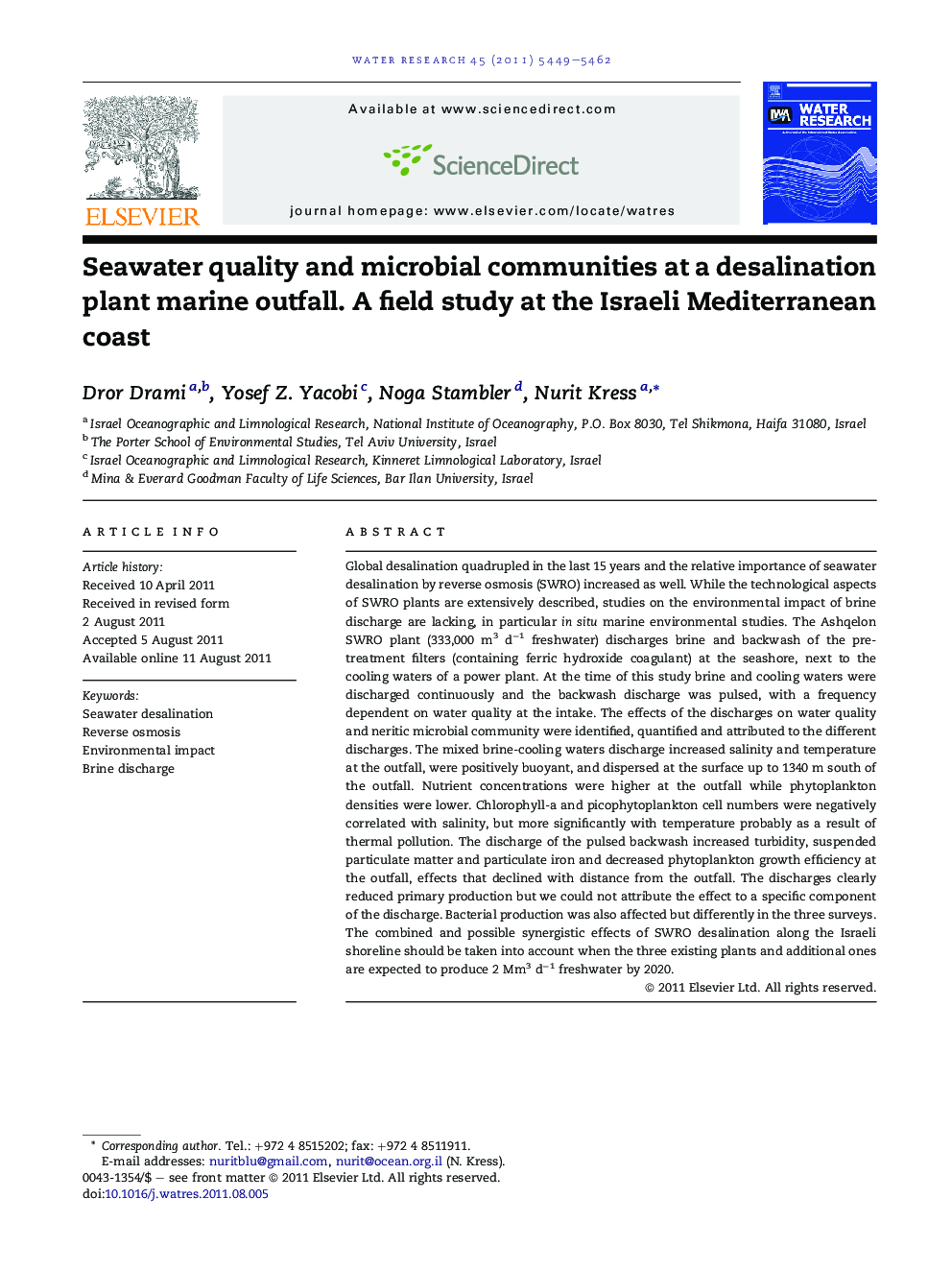| کد مقاله | کد نشریه | سال انتشار | مقاله انگلیسی | نسخه تمام متن |
|---|---|---|---|---|
| 4483165 | 1316880 | 2011 | 14 صفحه PDF | دانلود رایگان |

Global desalination quadrupled in the last 15 years and the relative importance of seawater desalination by reverse osmosis (SWRO) increased as well. While the technological aspects of SWRO plants are extensively described, studies on the environmental impact of brine discharge are lacking, in particular in situ marine environmental studies. The Ashqelon SWRO plant (333,000 m3 d−1 freshwater) discharges brine and backwash of the pre-treatment filters (containing ferric hydroxide coagulant) at the seashore, next to the cooling waters of a power plant. At the time of this study brine and cooling waters were discharged continuously and the backwash discharge was pulsed, with a frequency dependent on water quality at the intake. The effects of the discharges on water quality and neritic microbial community were identified, quantified and attributed to the different discharges. The mixed brine-cooling waters discharge increased salinity and temperature at the outfall, were positively buoyant, and dispersed at the surface up to 1340 m south of the outfall. Nutrient concentrations were higher at the outfall while phytoplankton densities were lower. Chlorophyll-a and picophytoplankton cell numbers were negatively correlated with salinity, but more significantly with temperature probably as a result of thermal pollution. The discharge of the pulsed backwash increased turbidity, suspended particulate matter and particulate iron and decreased phytoplankton growth efficiency at the outfall, effects that declined with distance from the outfall. The discharges clearly reduced primary production but we could not attribute the effect to a specific component of the discharge. Bacterial production was also affected but differently in the three surveys. The combined and possible synergistic effects of SWRO desalination along the Israeli shoreline should be taken into account when the three existing plants and additional ones are expected to produce 2 Mm3 d−1 freshwater by 2020.
► Desalination brines and cooling waters discharges impacted the marine environment.
► The mixture was positively buoyant and reached up to 1300 m from the outfall.
► Backwash increased turbidity, particulates, and iron.
► Backwash reduced phytoplankton growth efficiency.
► Brine and cooling water reduced standing stocks and rates of the microbial population.
Journal: Water Research - Volume 45, Issue 17, 1 November 2011, Pages 5449–5462